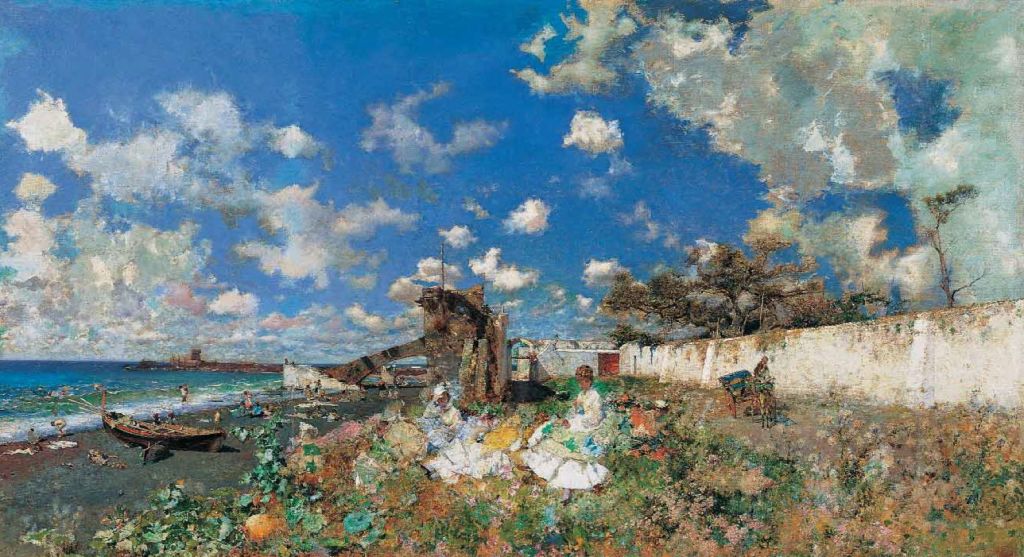By 1870, Marià Fortuny (1838–1874) was painting quickly outdoors, using high-chroma colours, and in a very painterly style. His orientalism was flourishing too, and he seems to have enjoyed critical appreciation.

His undated watercolour sketch of Moors on Horseback shows him using washes very loosely too.
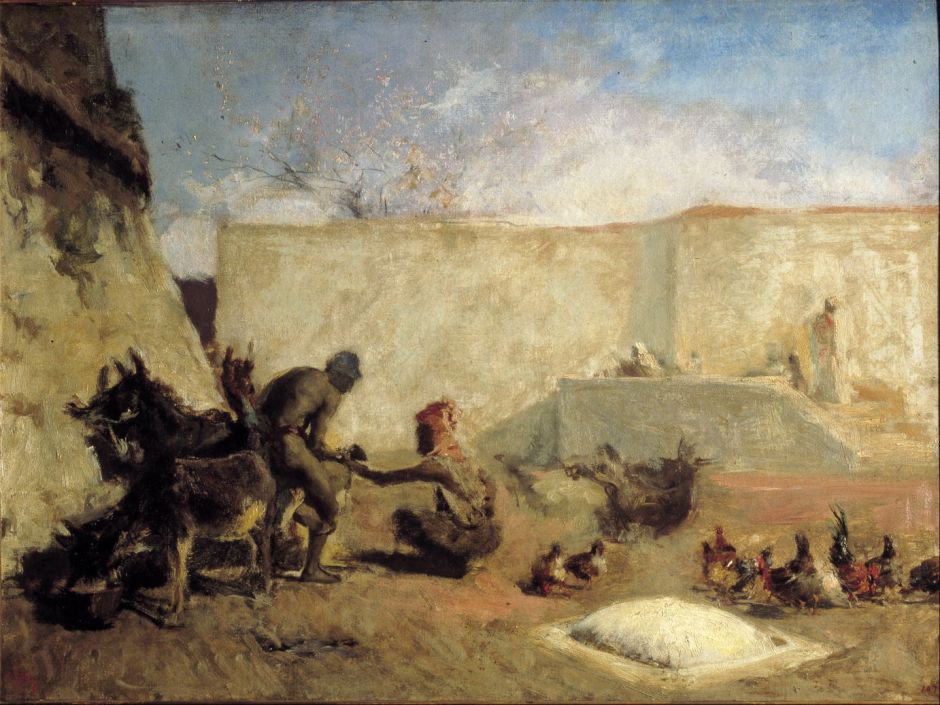
Moroccan Farrier is an oil sketch from about 1870 which shows a scene in a courtyard during one of his visits to North Africa. A local farrier is shoeing a horse or donkey at the left.

Fortuny’s The Spanish Wedding (1870) is another painting rich in intricate detail, although with very painterly passages. The scene is the interior of a sacristy, where a wedding party is going through the administrative procedures of the marriage ceremony. The groom is bent over a table, signing a document, while the bride behind him (holding a fan) is talking to her mother.
The rest of the wedding party waits patiently, but a woman at the back of the small group turns towards a penitent, who stands to the right of the group. He carries an effigy of the soul burning in flames. The wedding party, and a group seated at the right, are shown in richly-patterned dress, as if attending a masked ball. Their detail contrasts with the more painterly rendering of the surroundings,
This painting was first exhibited in Goupil’s Paris gallery, and was soon turned into prints.

In about 1870 or 1871, Fortuny moved to Granada, where he continued to paint voraciously. One of his more unusual works made there is The Slaying of the Abencerrajes (c 1870), which shows a legend from the early 1400s. At that time, the two major family dynasties who were competing for power were the Abencerrages or Abencerrajes, and the Zegris. One of the former family fell in love with one of the royal court, and was caught trying to climb up to her window.
The king flew into a rage, ordered the whole family to be confined in one of the most beautiful courts of the Alhambra palace, and then had them killed by the Zegris. Fortuny’s painting shows those bodies littering the floor of that court.
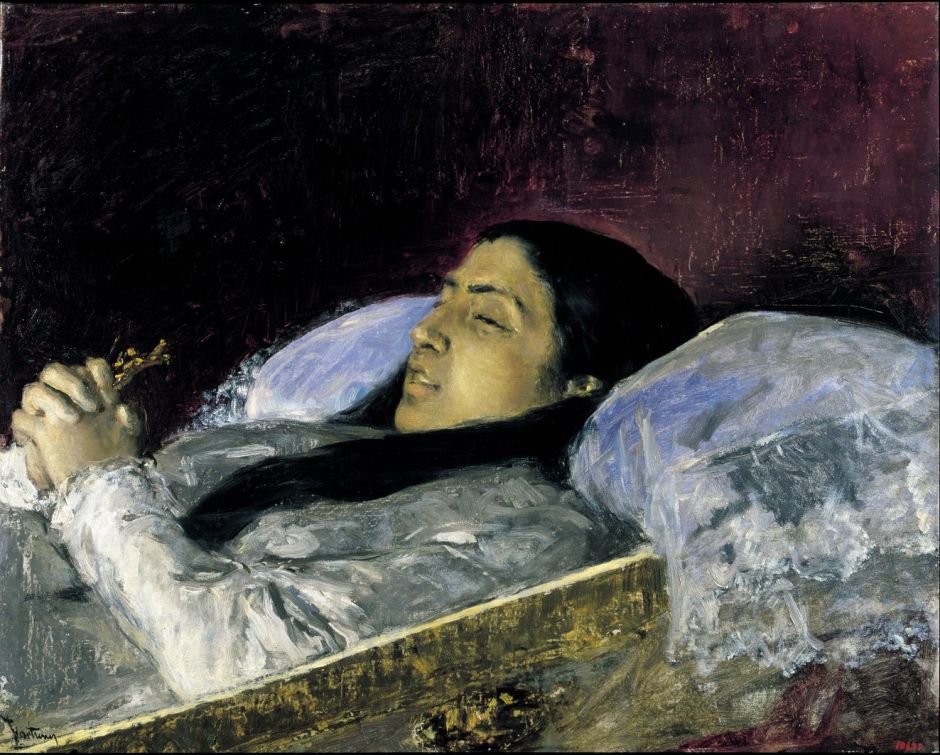
Like Manet and the French Impressionists, Fortuny painted motifs which challenged social attitudes of the day. His portrait of Miss Del Castillo on her Deathbed from 1871 shows a similar scene to Claude Monet’s later Camille on her Death Bed (1879), and tackles the great nineteenth century obsession with death.
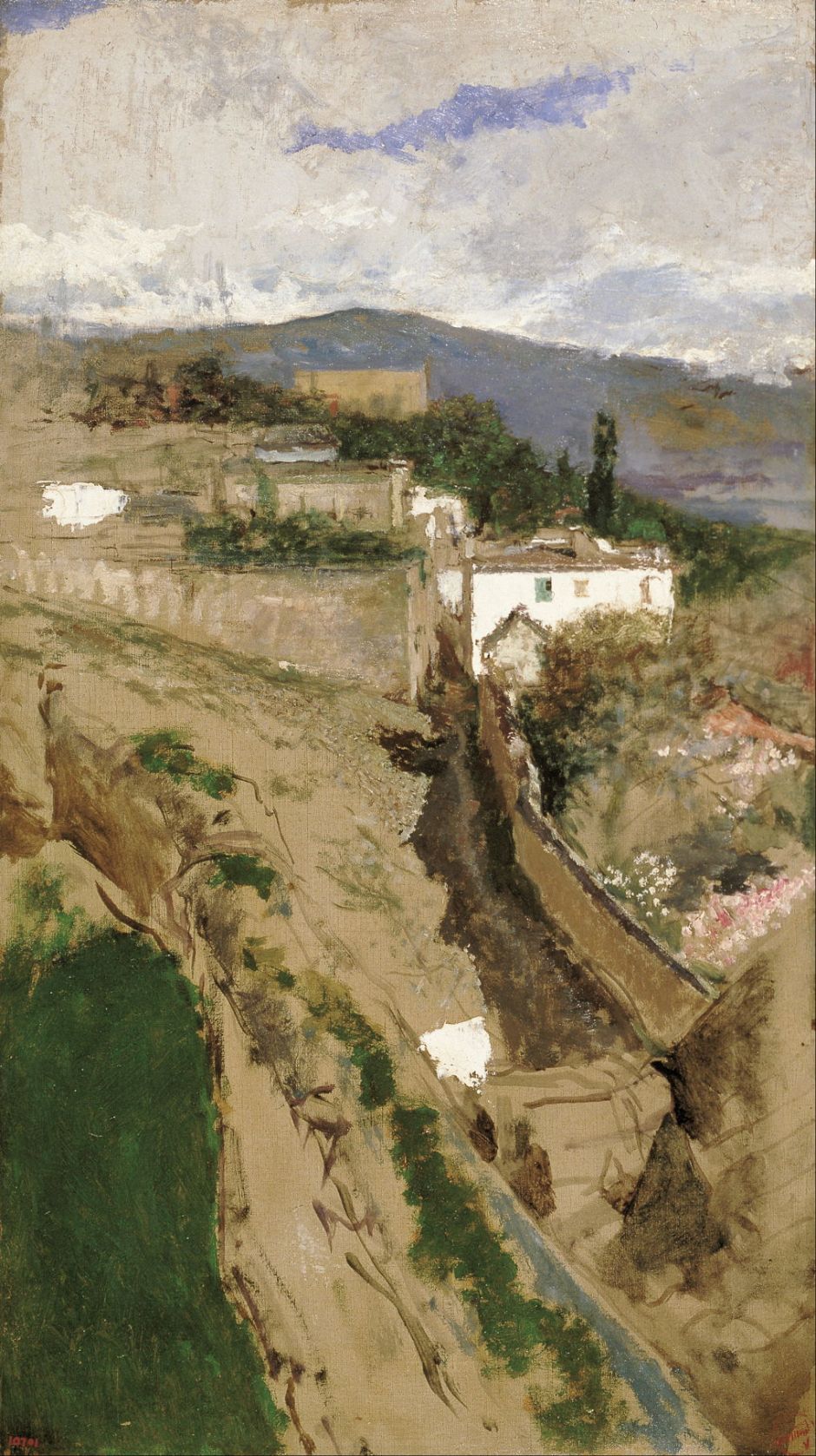
According to all its descriptions, Fortuny’s Granada Landscape (c 1871) is a huge painting, roughly 8 by 4.5 metres, which would make it a very difficult proposition for a plein air oil sketch, which is what it appears to be.

Fortuny pushed the boundaries of what was acceptable in art in his portrait of Carmen Bastián (1871-72). His model here is a young gypsy woman whom he ‘discovered’ in the Barranco de la Zorra, then a desolate area towards the main city cemetery. When posing for the painter on his ancient sofa, she provocatively lifted her skirt to taunt him.

Courtyard at Alhambra (Patio in Granada) (1873) is a more conventional motif painted in a thoroughly Impressionist style.
After his stay in Granada, Fortuny moved back to Rome, where he also seems to have spent a lot of time in the Portici district of Naples, painting en plein air.

Portici Landscape (1874) appears to be another vibrant oil sketch made in front of the motif, although its size is claimed to be 3 by 5 metres; I suspect that it is more like 30 x 50 cm, but could be wrong.

Nude on the Beach at Portici (1874) is an excellent example of the balance which Fortuny struck between its vigorously scrubbed-in background, giving a textural feel to the beach, and the virtuoso brushwork with which he rendered the woman’s body. Its high angle of view and her pose makes this decidedly voyeuristic.

Portici Beach (1874) is a complete contrast, the two women in its foreground appearing almost over-dressed for the occasion. This is perhaps Fortuny’s most floridly Impressionist painting, and coincided with the First Impressionist Exhibition in Paris.
Had this been painted in the same year by a French artist, who happened to hang out with certain other artists in Paris, don’t you think it would have been celebrated as one of the great Impressionist landscapes?
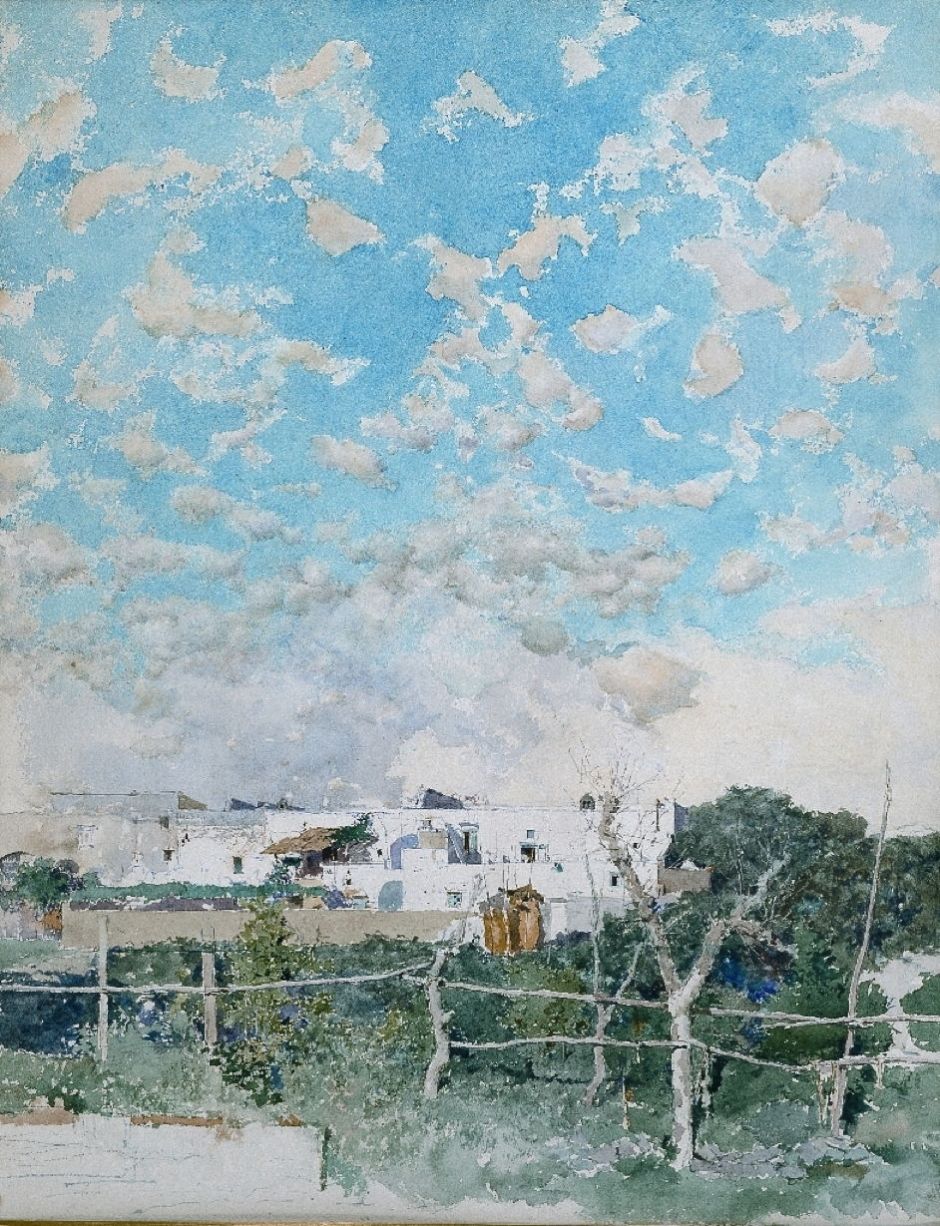
This watercolour Portici Landscape (1874) was painted in the same period.

The Painter’s Children, María Luisa and Mariano, in the Japanese Room (1874) is one of the few paintings in which Fortuny shows his family. His son Mariano, then aged three, also showed early artistic talents, and went on to become a stage lighting and set designer, then in 1906 became a leading couturier for the next forty years.
During the summer of 1874, when he was painting en plein air at Portici, Marià Fortuny was bitten by a malarial mosquito, and developed malaria fever, which was still common in that part of Italy at the time. He died suddenly from that illness, at the age of only thirty-six.

The de Madrazo brothers took care of Fortuny’s studio, and in homage to their teacher and friend, Raimundo de Madrazo later finished Fortuny’s marvellous painting of Garden of the Fortuny House (Casa Fortuny).
In 1889, Fortuny’s widow and children moved into what became known as the Palazzo Fortuny, overlookng the Campo San Beneto in Venice. One of the largest remaining palaces in Venice, it is now a museum, housing one of the largest collections of Marià Fortuny’s paintings, and objects relating to his son’s career and interests. Sadly, few of those paintings are accessible online, so most of the works that I have shown here are from the other major collection of his work, in Barcelona.
Marià Fortuny was one of the great Spanish masters, with the precocious skills and panache of the likes of John Singer Sargent or Joaquín Sorolla. His work deserves to be much better known.
Reference
Wikipedia (in Spanish).

